Back in the day, I made Phantom of the Opera a fixture in my Walkman. One song from that epic work always stood out to me – “Music of the Night.” In Texas, the first time I hunted with thermal optics, I felt like that song played across the velvety black landscape. There is something intoxicating about the dark. Even more exhilarating is the ability to see in it.
Now that I’m back in Michigan, come along with me as we scratch the surface on predator hunting, with thermal optics paired with the Ruger American Gen II Predator, chambered in 22 ARC.

Seeing in the Dark – What that Means with Thermal Optics
If you’re like me, thermal optics are a bit of an unknown. My fall excursion to Texas was actually the first time I had ever hunted with this equipment. I chased hogs with my oldest son on the Sellmark Ranch and enjoyed using a broad range of Pulsar and Sightmark products.
With assorted Hollywood movies being my sole source of reference for what thermal optics technology looked like, I had a lot to learn. Here are the basics.
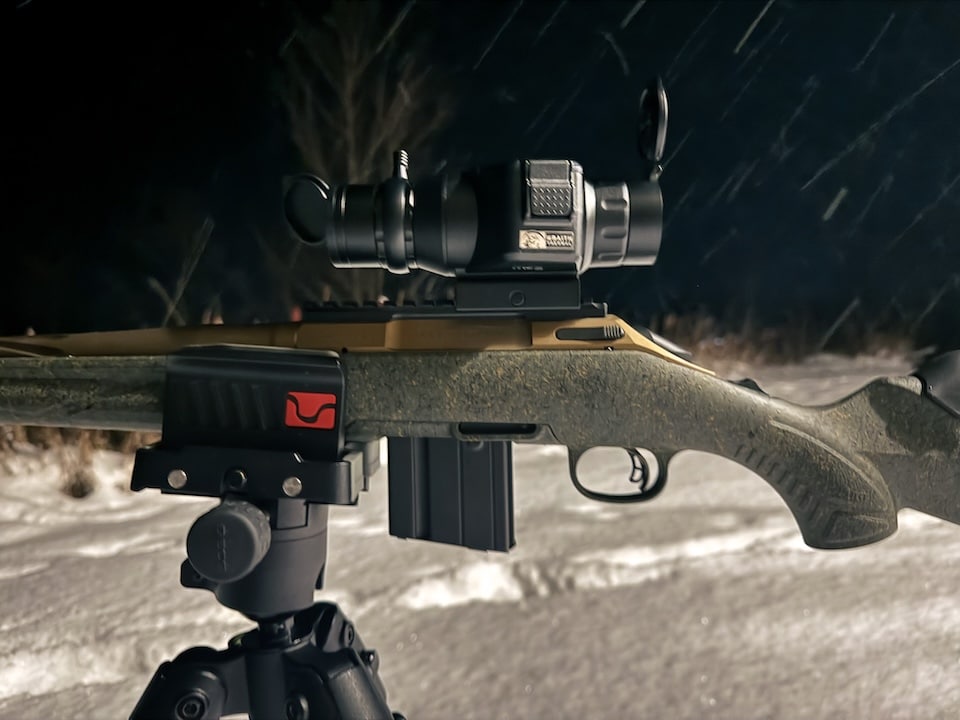
Thermal optics can take a couple of forms. First, you have a scope that goes on your rifle. This can look similar to a traditional scope, but has a much different user interface and visual set-up.

Second, is a monocular. This is a hand-held piece of equipment that you can use to scan your area in search of game or other goals. Kind of like binoculars, but only one eye piece. For the sake of this conversation, we are going to stick with these two tools.
We’ve got the essential interface, how do thermal optics work? The technology is incredibly technical and complex but can be distilled down to this concept: it is a visual representation of temperature differences in objects using pixels. In hunting scenarios, live critters give off heat, and they are hotter than their environment – day or night, generally. So do trees, recently laid footprints/tracks and heat-generating parts of vehicles (engines, brakes, etc). Thermal optics, unlike their technological cousin – night vision, can be used day or night – with varying degrees of effectiveness.
Purpose and Platform
For this first Michigan-based thermal optics adventure, I wanted to chase coyotes and needed an effective platform. I selected the Ruger American Gen II Predator in 22 ARC. I went this route for a few reasons.
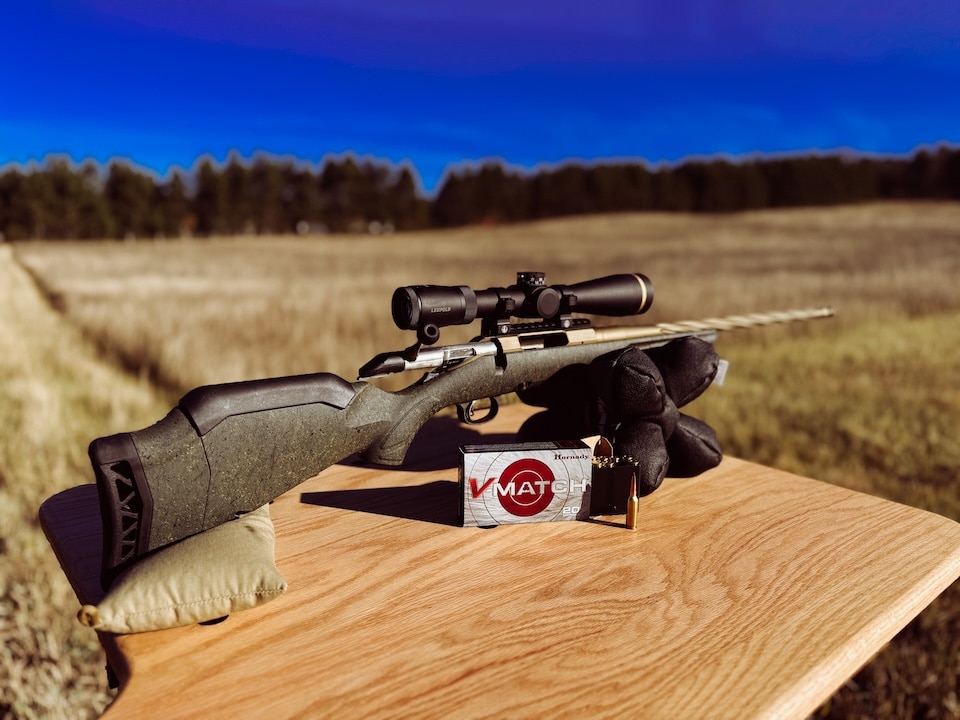
First, I am very familiar with the quality, reliability and accuracy of the Gen II. I hadn’t experienced the Predator before, but went that direction based on application. It has all the traits of the Standard, but two more inches of barrel, giving me 22-inches to work with out front. For this rifle, Ruger cuts the barrel thread pitch at ½-28. Since I plan on shooting/hunting with a suppressor attached to the rifle, this is an important piece of information to help me determine whether my suppressor will fit without a thread adapter.
Second, the Gen II has factory available mods that lend themselves well to my desired application. Both the length-of-pull and the comb height are easily adjustable. This is a great feature because predator hunting in northern Michigan is in the winter, and a hunter must wear lots of clothing layers to stay warm. Once you don the fluffy, warm, “sit in the snowbank for the evening” clothes, the length-of-pull you need can change by an inch or so. Being able to modify this on the rifle is very helpful!
As far as comb height, thermal scopes are heavier and bulkier than traditional optics. This will place them higher than normal optics, relative to the bore, and make proper eye alignment challenging. The Gen II alleviates this issue beautifully with low, medium and high comb options.
Caliber – What and Why
The 22 ARC is a fabulous little round recently conceived and brought to market by Hornady. The ARC stands for “Advanced Rifle Cartridge.” Designed for a comfy fit in an AR-15 platform, it also demonstrates great performance in a bolt gun. It is a 6.5 Grendel case necked down to accommodate a .22 caliber projectile.
Process and Planning
As I had never shot this rifle, nor used the particular thermal optic I intended to mount on it, I decided to shoot the 22 ARC first with a traditional optic with which I had familiarity. I have found it is better to eliminate variables when possible so you don’t spend hours and boxes of ammunition chasing problems that could have been quickly resolved. I wanted to confirm I could shoot the gun accurately. I would be using the Hornady 62-grain ELD-T V Match for both target and hunting applications.
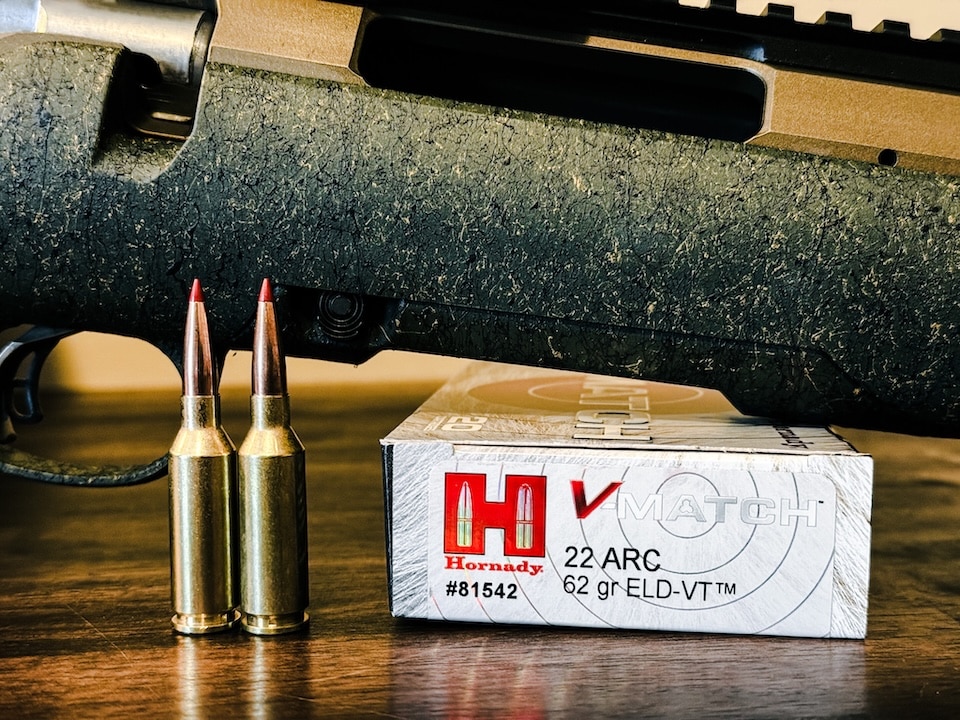
Toward that end, I mounted a Leupold 3-15 VX 5 HD on the Gen II and headed to the range. I wasn’t going to go through the time and ammunition to fully zero with this set up, but I wanted to get a feel for the gun with an optic I knew was sound and capable. After mounting and bore-sighting, I set up on a solid bench and took a cold-bore shot at 100 yards. While high and left, the shot felt good. I settled in and took a second one. I was momentarily annoyed as I didn’t see an obvious second hole in the Caldwell Peel Sight In Target. I adjusted all the way to 15 and saw a bulge on the top left rim of my first shot. Bingo. Two shots; nearly the same hole, so I had confidence I could shoot the gun well.
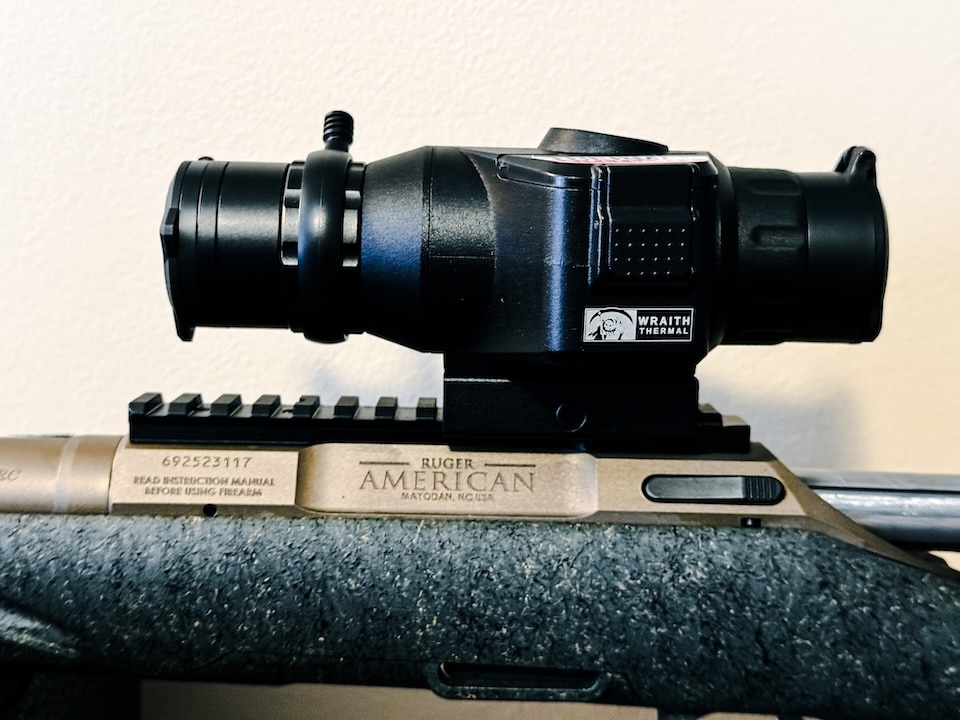
The next step was to mount the thermal. For this project, I selected the Wraith Mini Thermal from Sightmark. This is a 2-16×35 optic that is an outstanding entry point in the wonderful world of thermal optics hunting. It is a functional balance of resolution, size, weight and features.
The Wraith mounts directly to a Picatinny rail. After securing the Wraith in its mounts to the rifle, playing with it in the gun vise for a little bit, I found my ideal eye relief and tightened the optic and mounts down. Then, it came time to zero.
Remember, this operates off of temp differences, so sighting in looks a little different than normal. I used a piece of paper stapled to my backing board and put a HotHands hand warmer in the middle with another two staples. I now had a bullseye that my thermal could “see.”
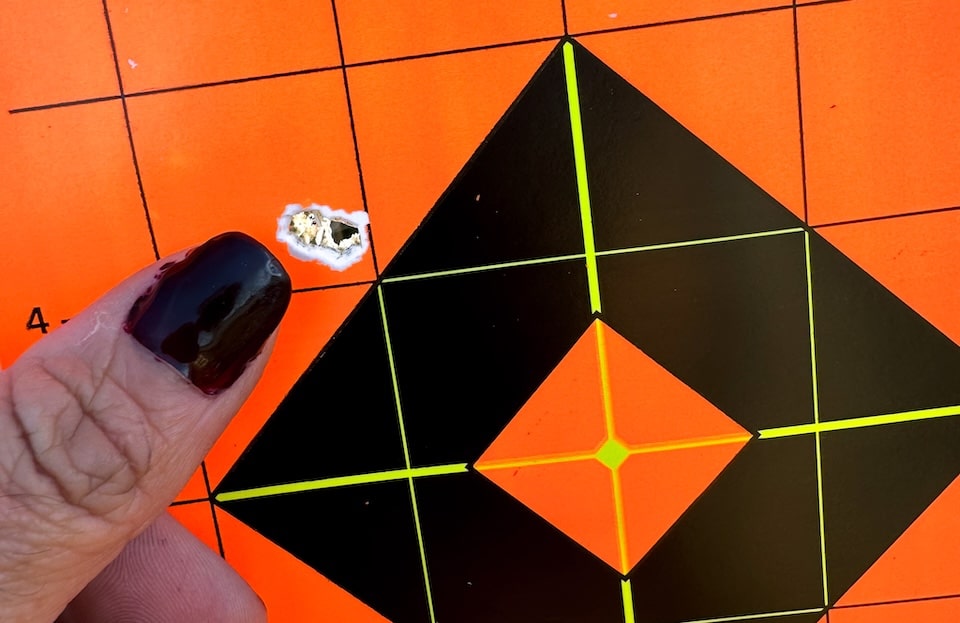
The directions for zeroing were simple, straightforward and easy to follow. I made sure to zero the rifle while my suppressor was mounted, as this can alter point of impact versus that of the unsuppressed rifle. I was now ready to hunt. As always, check your local regulations as far as gun, ammo, game, season and time of day to make sure you remain in compliance.
The Hunt
It was winter in northern Michigan and we had been blessed with a blizzard. I knew of a spot with lots of coyote sign, but had yet to see a coyote. With high hopes and handwarmers, I settled in to wait. I could hear some coyotes lighting up in the woods, but they didn’t seem to be coming near. They call it hunting, not shooting, for a reason.
I put in a few more sits with this set-up and came away with some observations. First, the Ruger Am Gen II is a very versatile and accurate bolt guns on the market for the money. It has a lot of custom features at an off-the-rack price point ($729). It’s also incredibly accurate.
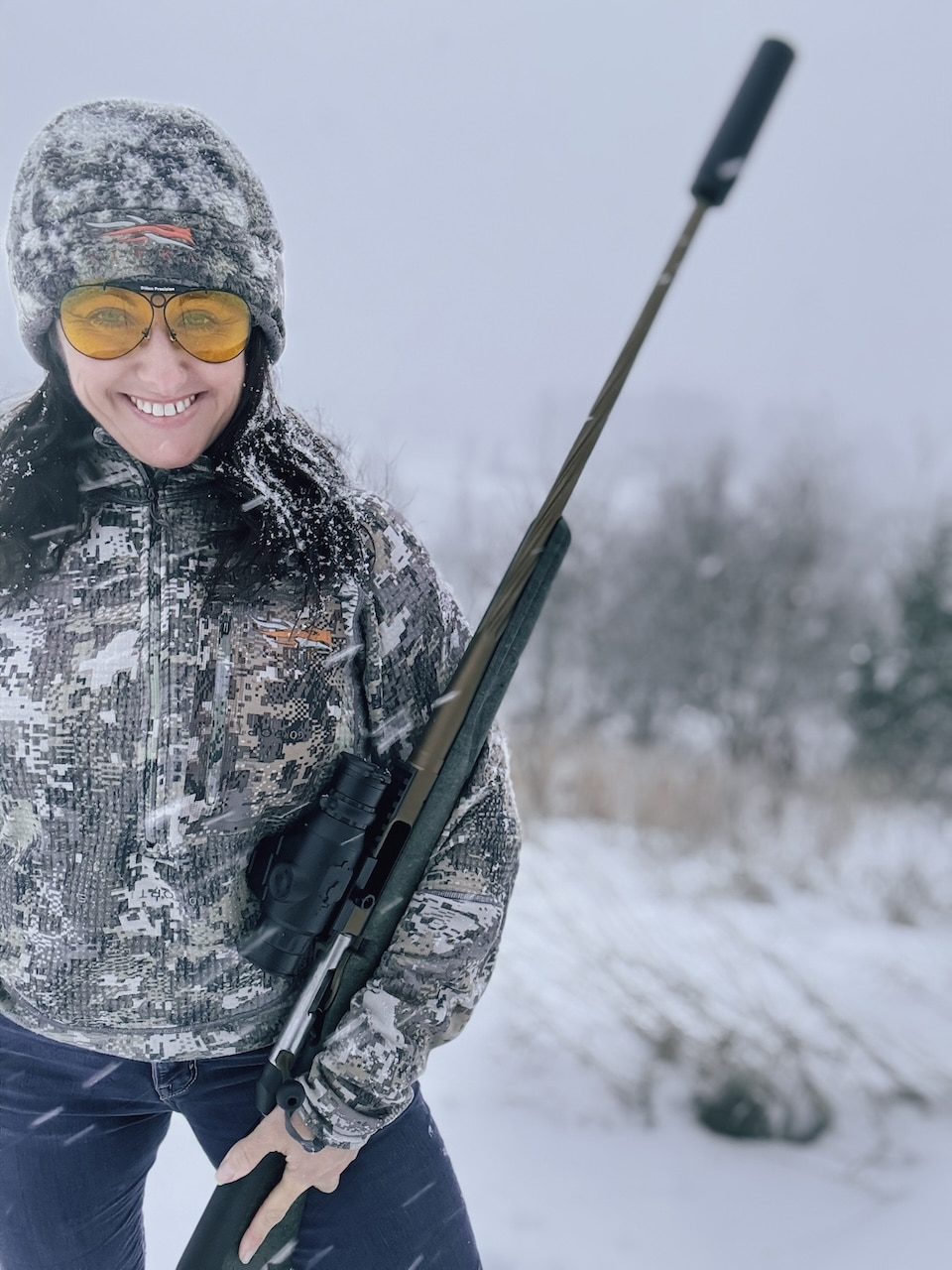
Although I’ve taken no coyotes in this process so far, being able to see in the dark is truly magical. The Wraith Mini Thermal allowed a peek into the nocturnal winter wonderland in which I sat. I could watch bunnies, squirrels and deer as they went about their nighttime routines – with them having no idea that I was seeing their every move.
I look forward to a winter of nighttime forays with this effective, accurate and fun to shoot set up.
For more information, check out the Ruger American Gen II Predator.
MSRP: $729
Andrea Bogard’s love for the range began at 12 with competitive handgun and expanded to encompass sporting clays a few years later. She became an NSCA instructor at 18 years old and spent the next 18 years getting married and raising two sons, ages 17 and 9 currently. Andrea started hunting six years ago and learned to shoot a rifle and a bow. She is now 41, a full-time writer, homeschool mom and business owner and has hunted three countries, three continents and 19 states. Her sons and lab (Mr. Moose) are the focus of her world. View all posts by Andrea Bogard